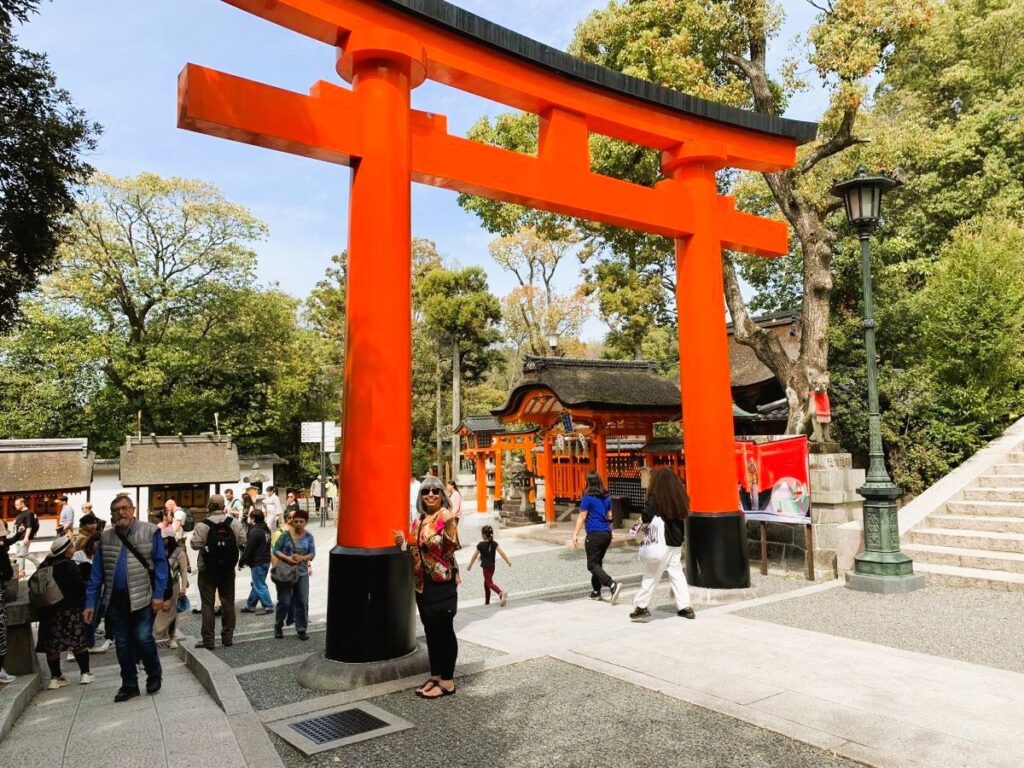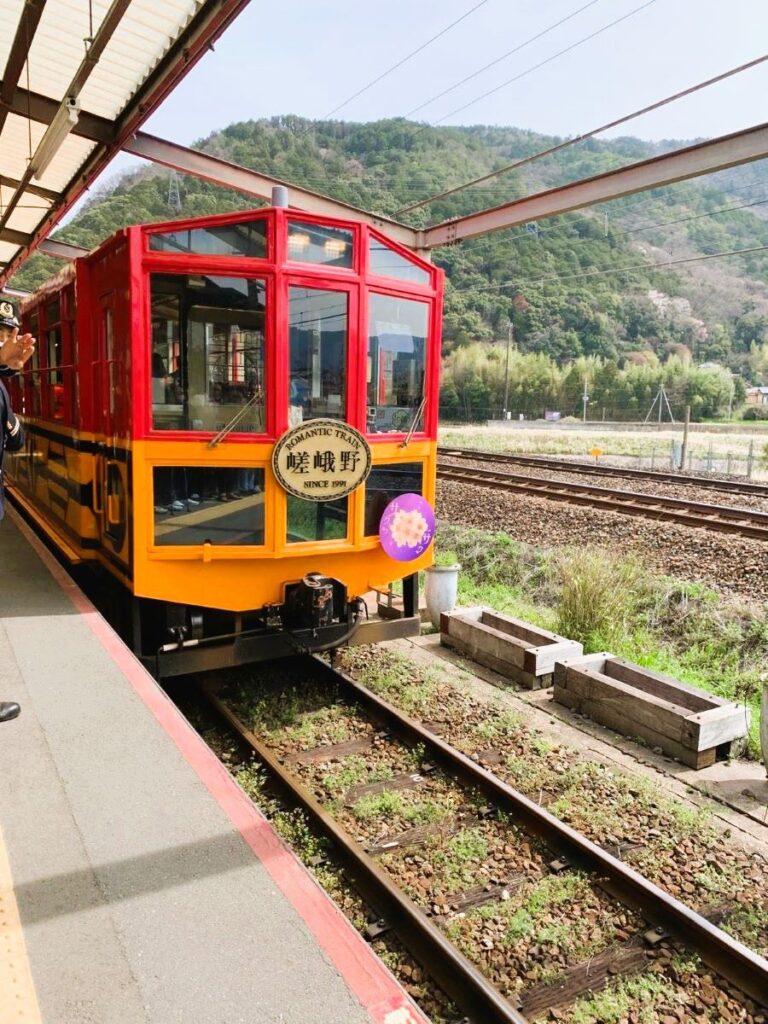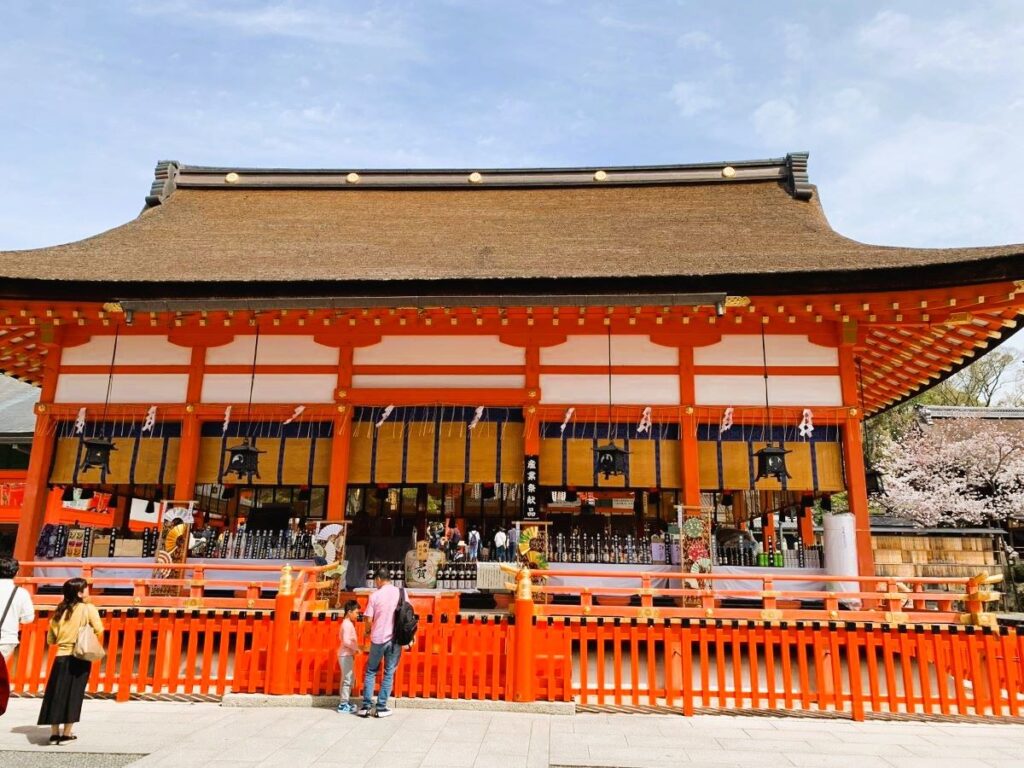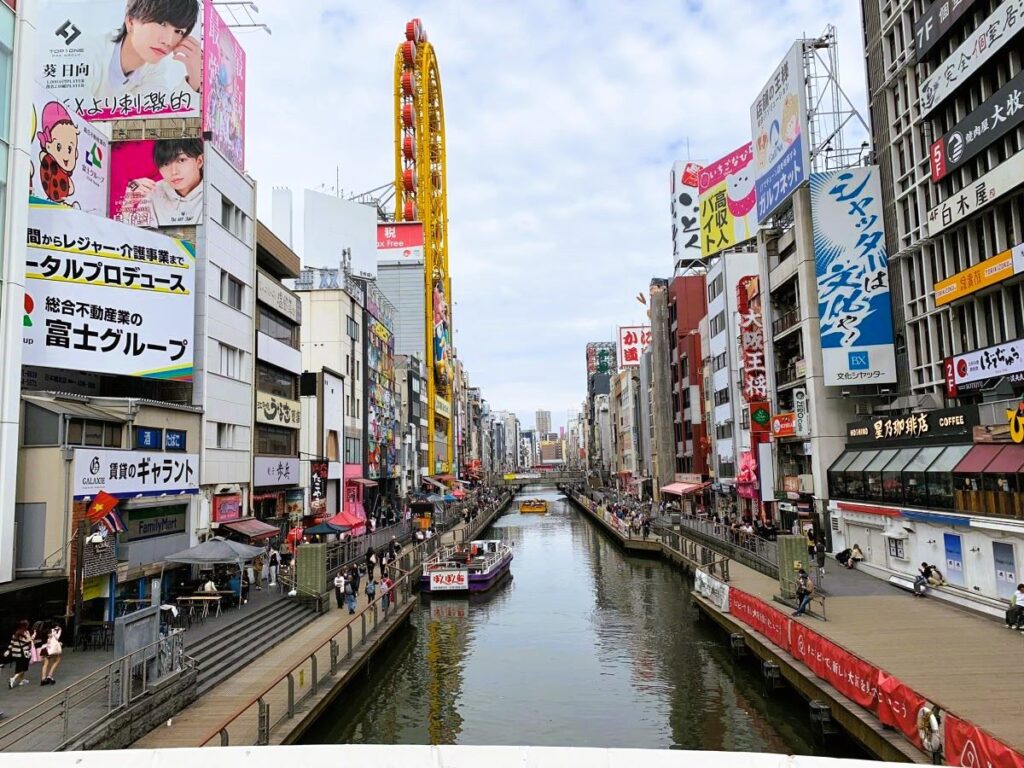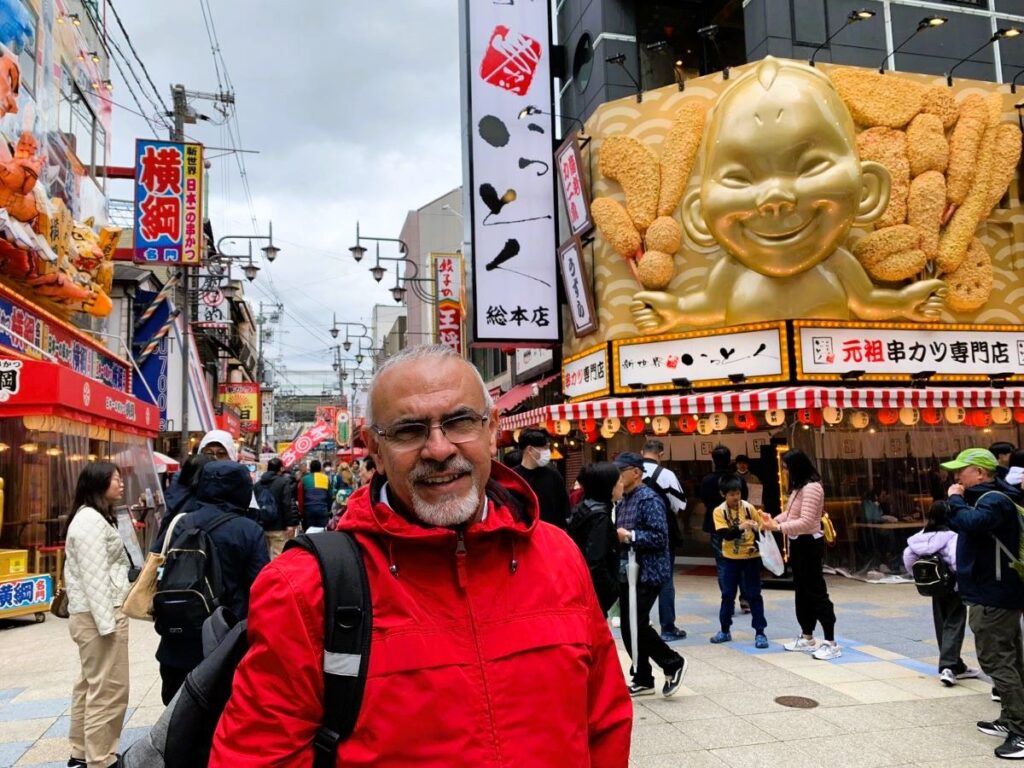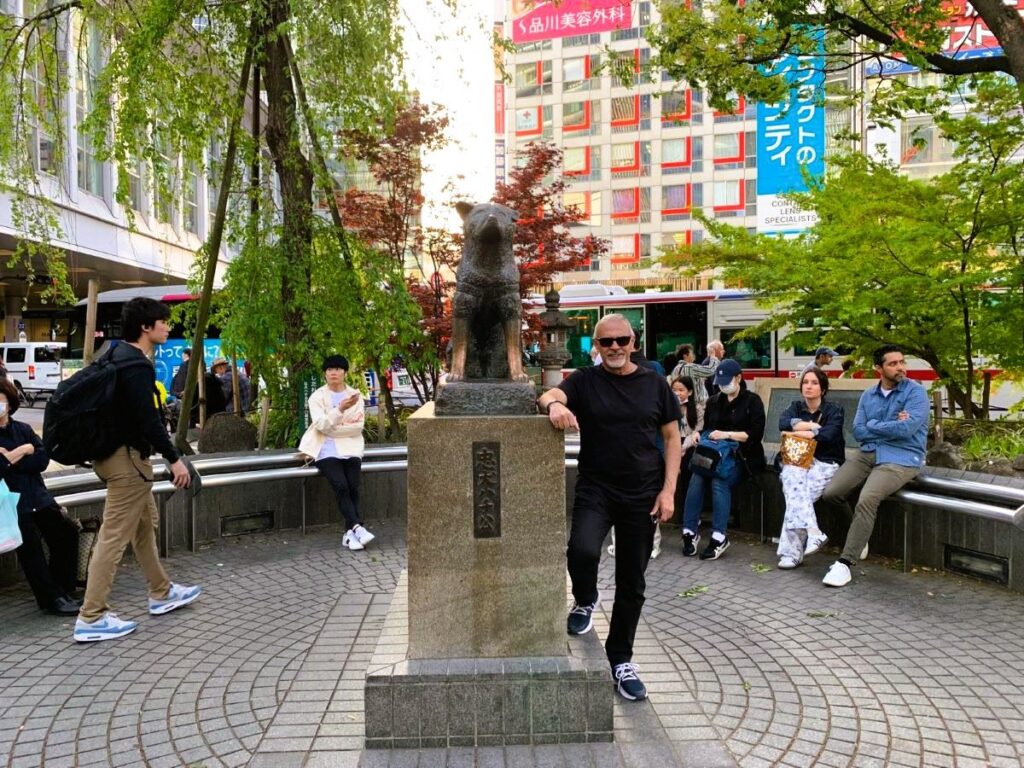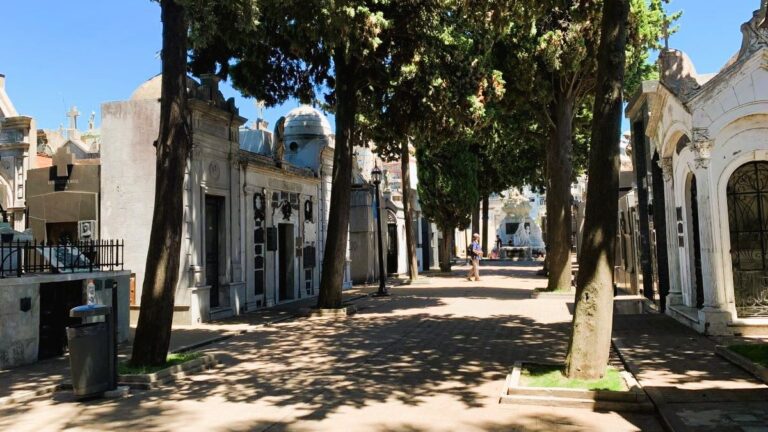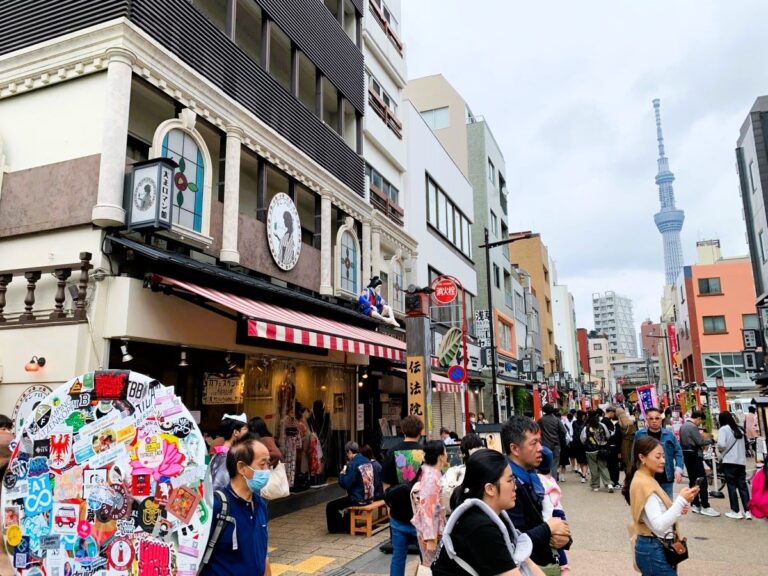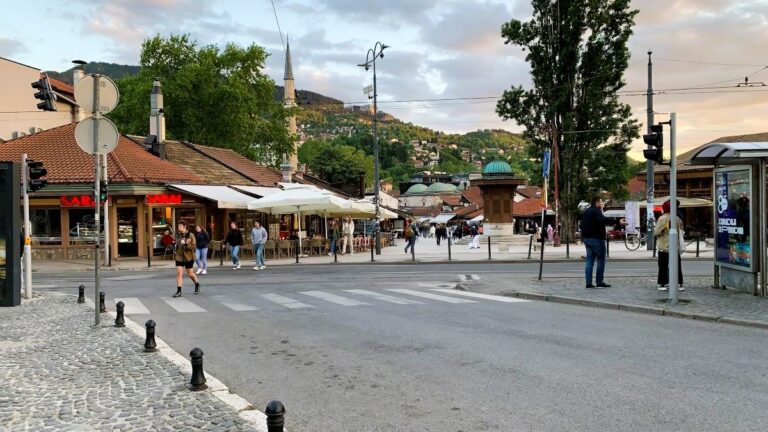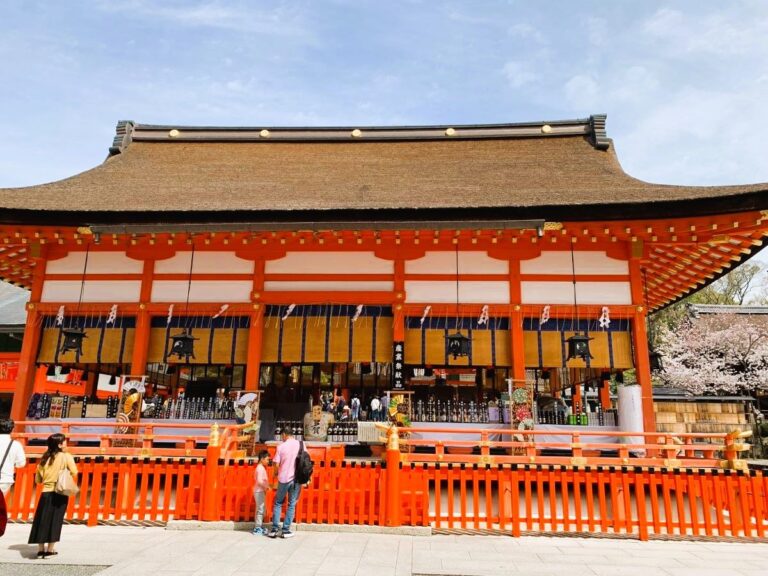A Perfect Day in Nara Park Japan: Top Attractions, Feeding Deer, and Quick Tips

How to spend a perfect day in Nara Park, Japan? You’ve come to the right place.
Nara Park (sometimes also referred to as Nara Deer Park Japan) is located in the heart of Nara City. It is one of Japan’s most iconic and picturesque destinations.
Spanning over 500 hectares, this vast park is home to freely roaming friendly Sika deer, (considered sacred messengers of the Shinto gods), ancient temples, and stunning landscapes that captivate visitors year-round.
It’s perfect for a day trip from Osaka or Kyoto.
Back in April of 2024 my wife and I spent 2 weeks in Osaka, from where we made several day trips to various places. One of them was to Nara Park.
When you spend a day in Nara Park, you’ll feed the adorable deer, explore stunning sites like Tōdai-ji, and feel the calming presence of Kasuga-Taisha Shrine.
With Nara Park’s proximity to UNESCO World Heritage Sites like Tōdai-ji Temple, Kōfuku-ji Temple, and Kasuga Taisha Shrine, it’s the perfect place to experience Japan’s rich history and traditions.
Getting to Nara Park
Nara Park From Osaka
Take the train: Taking the train is perhaps the most convenient way to reach Nara Park. You can take the Kintetsu-Nara Line Rapid Express from Osaka-Namba Station towards Kintetsu-Nara. The ride lasts around 30 to 45 minutes and offers a comfortable experience as you watch the scenery roll by your window. It’s just a five-minute walk from Kintetsu Nara Station to the park.


Just start walking up straight ahead to get to the attractions. You will come across a whole bunch of really cute deer that you can feed. 🙂 Within 5 minutes you’ll also reach Kofuku-ji Temple.
Nara Park From Kyoto
Traveling from Kyoto to Nara Park is straightforward, with two primary rail options: the JR Nara Line and the Kintetsu Railway.
JR Nara Line:
Miyakoji Rapid trains depart from Kyoto Station every 30 minutes and arrive at JR Nara Station. The duration is 45 minutes.
Kintetsu Railway:
There are 2 service options with Kintetsu Railway:
Limited Express Trains:
- Duration: Approximately 35 minutes
- Fare: 1,280 yen
- Note: Requires a limited express ticket in addition to the base fare
Express Trains:
- Duration: Approximately 45 minutes
- Fare: 760 yen
They depart from Kyoto Station and arrive at Kintetsu Nara Station.
Kintetsu Nara Station is closer to Nara Park, approximately a 5-10 minute walk.
Recommendations:
- If you possess a Japan Rail Pass, the JR Nara Line’s Miyakoji Rapid Service is cost-effective and convenient.
- For proximity to Nara Park and a shorter walk, Kintetsu Railway is preferable.
- Limited Express trains on Kintetsu offer a faster journey but at a higher fare and require an additional ticket.
Both train services operate frequently throughout the day, facilitating flexible travel plans.
Feeding the Deer
I’ll be honest- the highlight of this trip for me was watching and feeding these beautiful animals! These gentle creatures, considered sacred, roam freely and are a delight to interact with. You can buy the specially formulated deer crackers, called “shika senbei”. These crackers are available from vendors throughout the park and are the only safe food to give the deer. Feeding them anything else might upset their stomachs or even harm them.

Many deer have learned to bow to visitors as a way to ask for food. This charming behavior has become a highlight for tourists. When offering crackers, try bowing your head slightly. In most cases, the deer will respond by bowing back, creating a magical connection between you and these beautiful animals.
Top Attractions in Nara Park
Kofuku-ji Temple
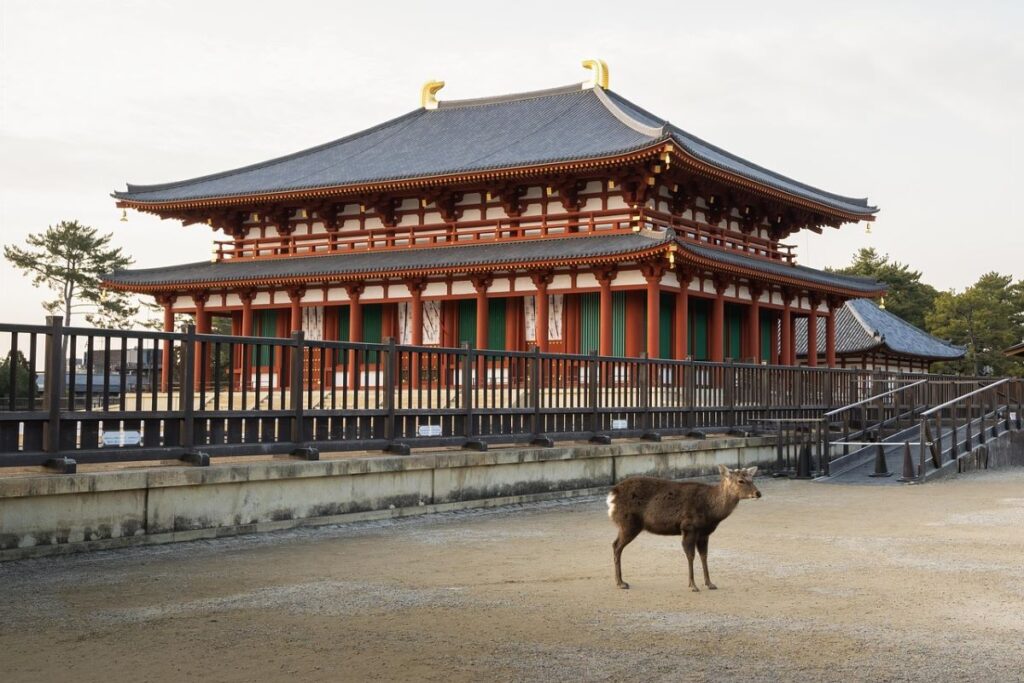
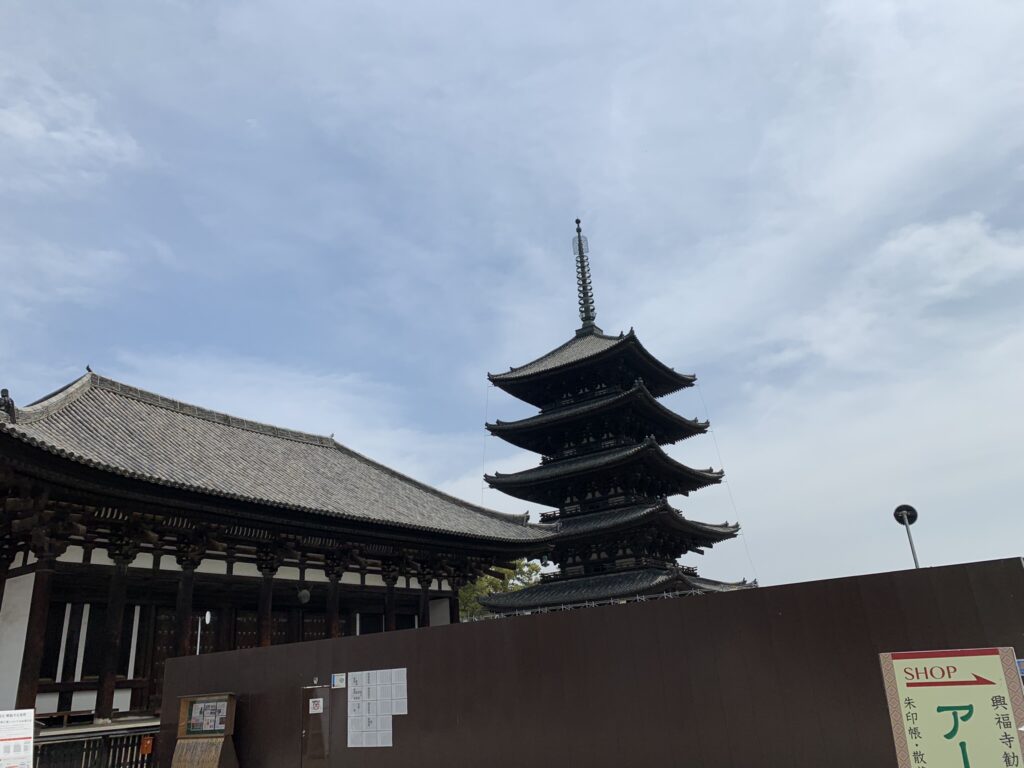
Within the expansive beauty of Nara Park lies Kofuku-ji Temple. It’s only about 5 minutes’ walk from the Kintetsu train station. It’s a good idea to visit here first.
Established in 710 AD by the influential Fujiwara family, Kofuku-ji once boasted over 150 structures, serving as a significant hub for Buddhist worship and political discourse.
Its five-story pagoda, standing at 50 meters, is one of the tallest and oldest in Japan, symbolizing the city’s ancient spirit.
Originally built in 730, it was reconstructed several times, with its elegant structure captivating those who visit. More than just a beautiful structure, the pagoda and temple play a significant role in the region’s history and religious practices.
Today, visitors can explore the temple grounds free of charge. However, to delve deeper into its treasures, entry to the National Treasure Hall requires a fee of 700 yen for adults and college students, and 600 yen for children aged 6 to 12.
The temple grounds are open 24 hours a day, allowing visitors to experience its serene ambiance at any time. However, the National Treasure Hall is typically open from 9:00 AM to 5:00 PM, with the last entry at 4:30 PM.
Todai-ji Temple
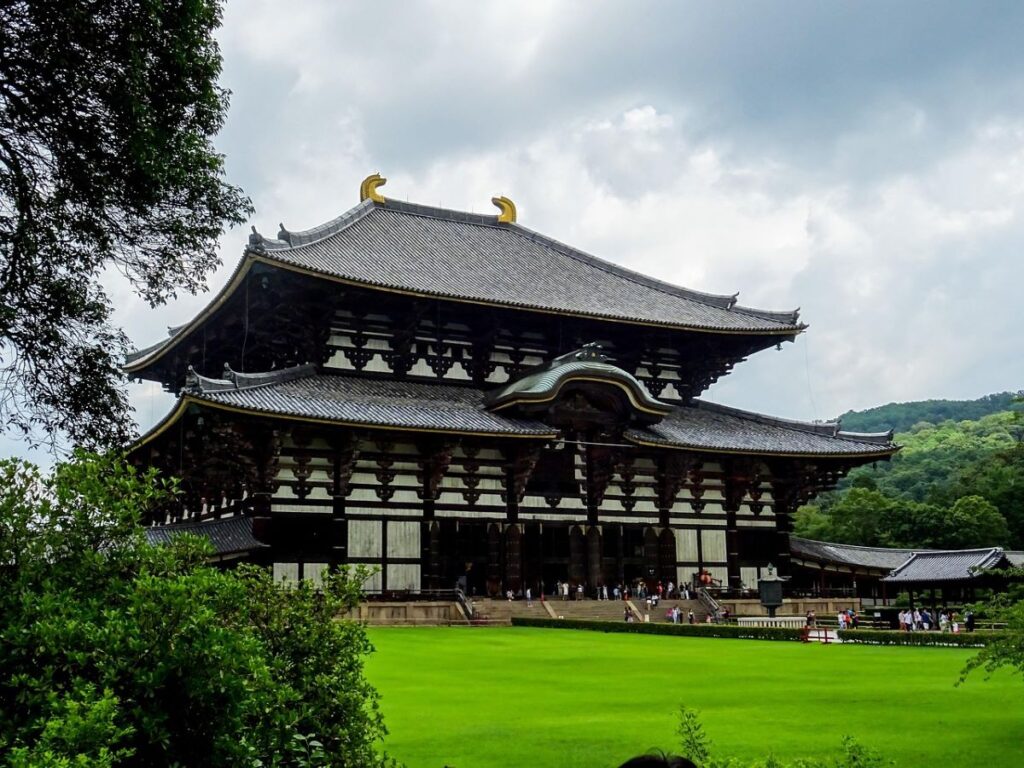
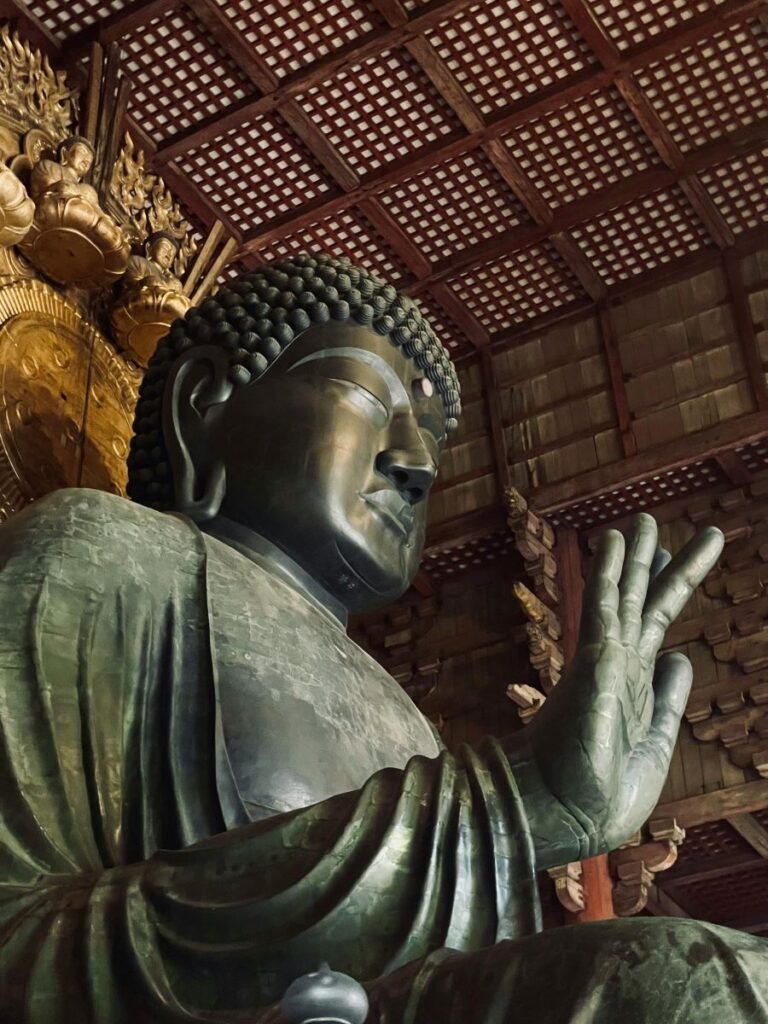
Todai-ji Temple in Nara Park is a stunning architectural marvel and a must-visit for anyone interested in Japanese history and culture.
The temple houses the Great Buddha (Daibutsu), one of the largest bronze statues in the world. This statue represents Vairocana Buddha and stands an impressive 15 meters tall. It’s not just the size that awes visitors but also the intricate details and the sheer serenity its presence emanates.
The temple itself, originally constructed in 752, showcases extraordinary wooden architecture that has been reconstructed several times to retain its glory.
For more information on Todai-ji Temple’s history, you can visit their official site.
So if you only have a day in Nara Park don’t miss this temple.
Visitor Information:
- Operating Hours: The temple welcomes visitors daily from 7:30 AM to 5:30 PM. Please note that hours may vary slightly with the seasons, so it’s advisable to check the official website before planning your visit.
- Admission Fees: Entry to the Daibutsu-den requires a fee of 600 yen for adults and 300 yen for children aged 6-12. For a more comprehensive experience, a combination ticket that includes access to both the Great Hall and the Todai-ji Museum is available at 1,200 yen for adults and 600 yen for children.
Visitor Tips:
- Early Arrival: To fully appreciate the temple’s serenity and avoid the midday crowds, consider arriving early in the morning.
- Footwear: As you’ll be exploring various temple buildings and traditional tatami-matted areas, wearing comfortable shoes that are easy to remove is recommended.
- Photography: While the temple’s exterior and surrounding gardens offer picturesque views, be mindful of photography restrictions inside certain halls. Always look for signage indicating whether photography is permitted.
- Respectful Conduct: Remember that Todai-ji is an active place of worship. Maintain a respectful demeanor, speak softly, and dress modestly to honor the sanctity of the site.
Visiting Todai-ji Temple provides not only a glimpse into Japan’s profound historical and spiritual tapestry but also an opportunity to experience the tranquil beauty of Nara Park, complete with its friendly, free-roaming deer.
Kasuga-taisha Shrine

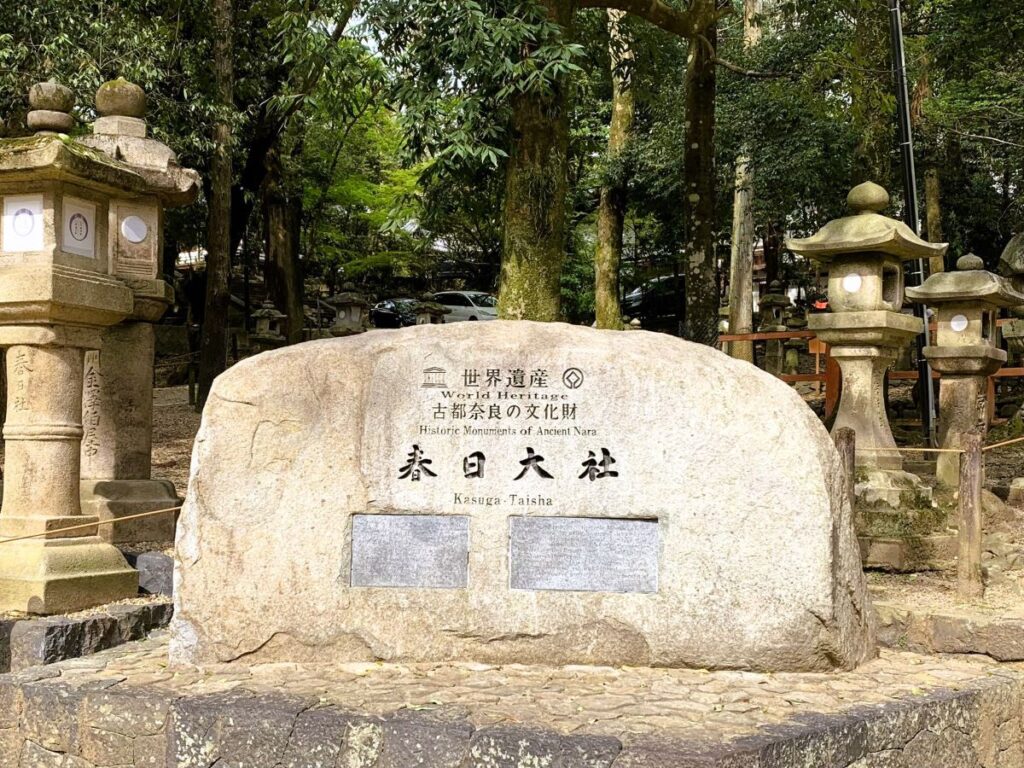
Located within the serene expanses of Nara Park lies Kasuga-taisha Shrine, a beacon of Japan’s rich Shinto heritage.
Established in 768 CE by the influential Fujiwara clan, this shrine has stood as a testament to Japan’s spiritual and cultural journey for over a millennium.
You are immediately captivated by the shrine’s distinctive vermilion structures, exemplifying the Kasuga-zukuri architectural style, and the enchanting pathways lined with over 3,000 stone and bronze lanterns. These lanterns, generously donated by devotees, are illuminated biannually during the Mantoro Festivals in February and August, casting a mesmerizing glow that transforms the shrine into a realm of ethereal beauty. Learn more about Kasuga Shrine’s lanterns.
The shrine welcomes guests daily, with operating hours from 6:30 AM to 5:30 PM between March and October, and from 7:00 AM to 5:00 PM from November to February. While entry to the shrine’s outer areas is complimentary, access to the inner sanctuary requires a modest fee of 500 yen (approximately €4).
For an enriched experience, consider exploring the Manyo Botanical Garden, which showcases around 250 plant species mentioned in the ancient Man’yoshu poetry anthology, or visiting the Kasuga Taisha Museum, home to a collection of sacred artifacts. Each of these attractions has an additional entry fee of 500 yen.
Kasuga Taisha Shrine offers a profound glimpse into Japan’s spiritual traditions, architectural elegance, and the harmonious coexistence of nature and culture. For more on Kasuga-taisha Shrine go to Wikipedia.
Nara National Museum
Art enthusiasts will find a haven at the Nara National Museum. Known for its impressive collection of Buddhist art, the museum offers a deep dive into the spiritual and cultural layers of Japan. From ancient artifacts to exquisite paintings, the museum’s exhibits provide a comprehensive view of Buddhist influence on Japanese history.
Check out the museum’s official website for current exhibitions and more.
Opening Hours and Admission
The museum operates from 9:30 AM to 5:00 PM, with the last admission at 4:30 PM. Standard admission is 700 yen for adults, 350 yen for college students, and free for visitors under 18. Please note that hours and fees may vary during special exhibitions, so it’s advisable to check the official website before your visit.
Visitor Tips
- Location: The museum is a 15-minute walk from Kintetsu Nara Station or a 30-minute walk from JR Nara Station. Alternatively, buses from either station stop at Himuro Shrine/National Museum, adjacent to the museum.
- Nearby Attractions: Situated in Nara Park, the museum is close to other cultural landmarks like Todai-ji Temple and Kofuku-ji Temple, making it convenient to explore multiple sites in one visit.
- Seasonal Highlights: Visiting in autumn offers a unique opportunity to experience special exhibitions, such as the annual showcase of treasures from Todaiji Temple.
Isuien Garden
The Isuien Garden is a hidden gem that offers visitors a serene retreat from the bustling crowds of Nara Park. It is a perfect spot to enjoy traditional Japanese landscaping.
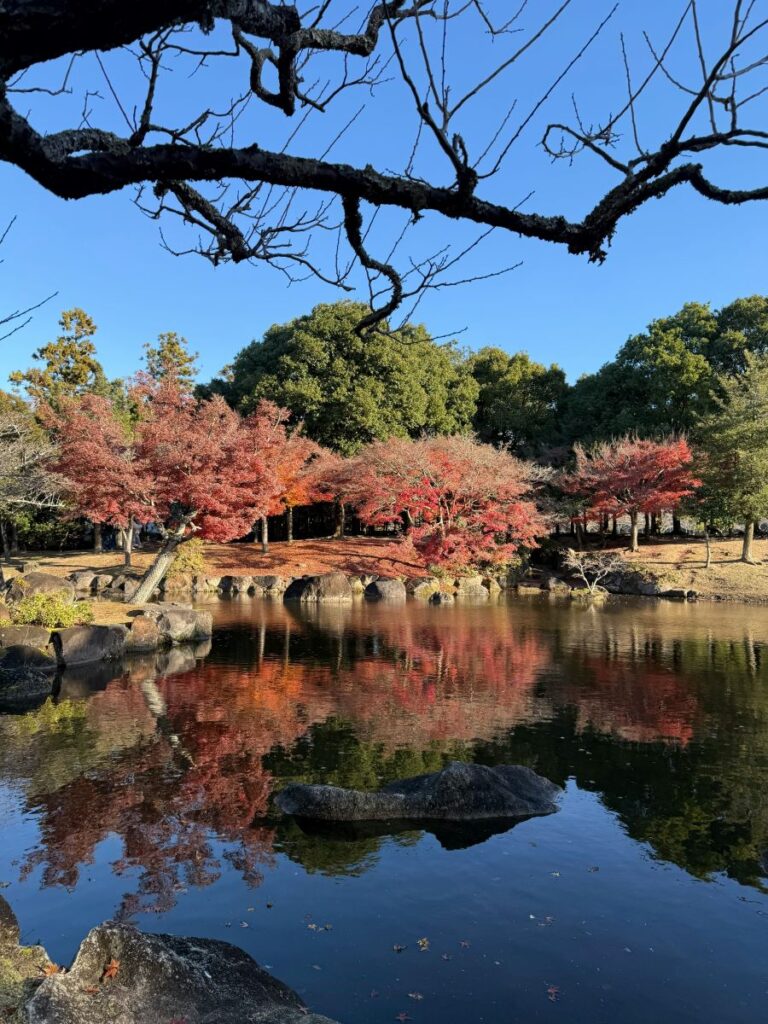
Divided into the Front Garden from the Edo Period and the Back Garden from the Meiji Era, visitors can enjoy winding paths, delicate ponds, and carefully curated vegetation.
With the towering Todaiji Temple in the background, Isuien perfectly embodies the Japanese concept of “borrowed scenery” (shakkei), where nature and architecture harmonize to create a breathtaking vista.
As you head towards Todai-ji Temple, you’ll find Isuien tucked away near the Nara National Museum. It’s about 5 minutes walk from Todai-ji Temple.
Entrance Fee & Accessibility
Unlike Nara Park, which is free to explore, Isuien Garden does have an admission fee of 1200 yen (which also includes access to the nearby Neiraku Museum, home to a fine collection of ceramics and historical artifacts). The entrance fee is well worth it for those who appreciate traditional Japanese gardens, photography, or simply a peaceful break from Nara’s busier sights.
Visitor Tips
- Best Time to Visit: Isuien is stunning in all seasons, but autumn (for vibrant maple leaves) and spring (for cherry blossoms) are particularly magical.
- Avoid the Crowds: While never as busy as Todaiji, mornings or late afternoons are the most peaceful times to visit.
- Tea & Relaxation: Consider stopping by Sanshutei Teahouse inside the garden to enjoy matcha with a scenic view.
- Combine Your Visit: If you love gardens, you can also check out Yoshikien Garden, which is right next to Isuien and offers free entry to foreign visitors!
For a visitor guide, you can visit Isuien Garden’s official site.
Food Spots Near the Attractions in Nara Park
Near Kofuku-ji & Kintetsu Nara Station
- Edogawa Naramachi 🍱 (5 min from Kintetsu Nara Station)
- Specialties: Unagi (grilled eel) over rice.
- Perfect if you want a traditional Japanese meal in a cozy setting.
- Kameya 🍵 (Near Kofuku-ji)
- Specialties: Kitsune udon (thick noodles with fried tofu) & Mochi sweets.
- Try their warabi mochi, a soft, jelly-like dessert covered in roasted soybean flour.
- Nakatanidou 🍡 (Near Kofuku-ji)
- Specialties: Freshly pounded yomogi mochi (mugwort rice cake) with sweet red bean filling.
- They do live mochi-pounding demonstrations, which is fun to watch!
Near Todai-ji
- Shizuka 🍛 (10 min walk from Todai-ji)
- Specialties: Nara-style kakinoha-zushi (pressed sushi wrapped in persimmon leaves) & Japanese curry.
- Their deer-shaped rice is a cute touch!
- Mellow Café ☕ (Near Nara Park)
- Specialties: Pizza, pasta, coffee, and pancakes.
- A good spot if you need a break from Japanese food.
Near Kasuga Taisha
- Kasuga Ninai-jaya 🍵 (On the path to Kasuga Taisha Shrine)
- Specialties: Matcha tea & light Japanese sweets.
- Traditional tea house with a beautiful forest view.
- Yoshinohonkuzu Tengyokudo 🍶 (Near Kasuga Taisha)
- Specialties: Kudzu-mochi (chewy jelly-like dessert made from arrowroot starch).
- They also serve amazake (sweet fermented rice drink), which is nice on a cold day.
Near Nara National Museum
- Mikasa Coffee ☕ (5 min from the museum)
- Specialties: Hand-drip coffee & fluffy pancakes.
- Great for a coffee break after sightseeing.
Vegetarian-Friendly Food Spots
Near Kofuku-ji & Kintetsu Nara Station
- Kinatei 🥬🍱 (5 min from Kintetsu Nara Station)
- Fully vegetarian & vegan-friendly!
- Specialties: Shojin ryori (Buddhist vegetarian cuisine), vegetable tempura, and tofu dishes.
- Cozy atmosphere with a traditional Japanese meal experience.
- Hiyori 🍚🥗 (Near Kofuku-ji)
- Specialties: Vegetarian teishoku (set meal), miso soup with seasonal veggies, and homemade tofu.
- Small, homey place with a great selection of plant-based dishes.
Near Todai-ji
- Kameya 🍜 (Near Nara Park, mentioned earlier)
- Specialties: Kitsune Udon (udon noodles with fried tofu), soba, and rice dishes.
- Their mochi desserts are also vegetarian-friendly!
- Kotonoha by Todai-ji ☕🥗 (Inside Todai-ji Museum)
- Specialties: Vegetable-based sandwiches, salads, and soy milk drinks.
- A modern café with a beautiful garden view inside the temple grounds.
Near Kasuga Taisha
- Kasuga Ninai-jaya 🍵🥢 (On the path to Kasuga Taisha)
- Specialties: Vegetarian soba noodles, matcha tea, and Japanese sweets.
- Serene setting surrounded by trees.
- Yoshinohonkuzu Tengyokudo 🍡🍶 (Near Kasuga Taisha, mentioned earlier)
- Specialties: Kudzu-mochi (chewy arrowroot starch dessert) & Amazake (sweet rice drink).
- Great for a light, plant-based snack.
Near Nara National Museum
- Mellow Café ☕🍕 (Near Nara Park)
- Specialties: Vegetarian pizza, pasta, and salads.
- A casual spot with both Western and Japanese-style vegetarian dishes.
- Genkishin Nara 🍜 (Near Nara National Museum)
- Specialties: Vegan ramen with soy-based broth and fresh local vegetables.
- A great option if you’re craving a hearty bowl of noodles!
Tips for First-Time Visitors
- Start Early to Avoid Crowds – Nara Park is a popular destination, especially during cherry blossom season (spring) and autumn foliage season. Arriving early in the morning ensures a peaceful experience with fewer tourists.
- Bring Cash for Deer Crackers (Shika Senbei) – Feeding the deer is one of the highlights of visiting the park. Special deer crackers can be purchased from vendors around the park for around 200 yen. The deer may bow before receiving food—a charming and uniquely Nara experience!
- Respect the Wildlife – While the deer are generally friendly, they can become eager (especially if they see food). Avoid teasing them, and be mindful of their behavior.
- Wear Comfortable Shoes – The park is large, with many pathways leading to historic sites. Expect to do a lot of walking, so comfortable footwear is a must.
- Visit Nearby Attractions – Don’t miss Tōdai-ji Temple, home to the Great Buddha (Daibutsu), or Kasuga Taisha Shrine, known for its beautiful lanterns. The Nara National Museum is also worth a stop for those interested in Buddhist art.
- Stay Hydrated – Especially in the summer, when Nara can get quite hot. There are vending machines around the park for drinks, but carrying a reusable water bottle is a good idea.
- Consider a Guided Tour – If you’re interested in the deeper history of Nara, a guided tour can offer fascinating insights into the park’s temples, shrines, and legends.
Conclusion
Spending a day in Nara Park Japan, paired with must-see historical sites like Todai-ji Temple and Kasuga Taisha Shrine, and watching and feeding the iconic free-roaming deer creates beautiful memories that you’ll remember for every.
Stepping into Nara Park connects you with Japan’s past while offering a unique, interactive experience.
Related Posts:
Other Recent Posts:
-
Lake Bled Day Trip: The Perfect First-Time Adventure from Ljubljana
Welcome! If you’re spending time in Ljubljana and want to experience Slovenia’s most magical landscapes, a Lake Bled day trip from Ljubljana is an easy choice. With its glacial blue water, Lake Bled Island at its center, and Bled Castle perched high on the cliffs, this spot looks straight out of a fairytale—no need for…
-
Best Things to Do in Ljubljana, Slovenia (First-Time Visitor’s Guide)
Welcome! Thank you for visiting my blog about the best things to do in Ljubljana! In this guide I’ll share my own favorite spots and handy tips, best places to eat and some local insights you might not find elsewhere. Ljubljana, the charming capital of Slovenia, is stunning! The architecture is breathtaking! I promise you,…
-
Best Tango Shows in Buenos Aires: My Guide for First-Time Visitors
Buenos Aires is the birthplace of tango – raw, passionate, and unforgettable! But if it’s your first time in the city, choosing the right tango show can feel overwhelming. Do you go for the glamorous, cabaret-style performance with a gourmet dinner? Or do you slip into a smaller, historic venue where tango feels more like…
-
Recoleta Cemetery in Buenos Aires: History, Highlights, and Visitor Tips for 2025
Welcome to Recoleta Cemetery! “If you’re visiting Buenos Aires, this is a place you should see at least once. You’ll leave with photos, stories, and a deeper understanding of Argentina’s history.” Related Posts: Introduction: Why Visit Recoleta Cemetery? Recoleta Cemetery in Buenos Aires is not your typical graveyard.It’s more like an open-air museum filled with…
-
Tokyo vs Osaka: Your Guide To Understanding The Difference Between The Two Most Popular Cities in Japan [2025]
So the question is, Tokyo or Osaka which is better? Do you want to pick between the two? It can feel like it’s hard to decide, especially if it’s your first trip to Japan. We’ve been to both. We loved them both. We spent more days in Osaka than we did in Tokyo, and did…
-
The Ultimate 5-Day Itinerary in Tokyo: A Fun and Easy Guide for First-Time Visitors
5 Day Itinerary in Tokyo – A City of Contrasts and Wonders I’ve created this 5 day itinerary in Tokyo to help you get the most out of your time here. It’s based on my own experience in this incredible city. Tokyo is one of the most exciting cities in the world. It’s a place…

